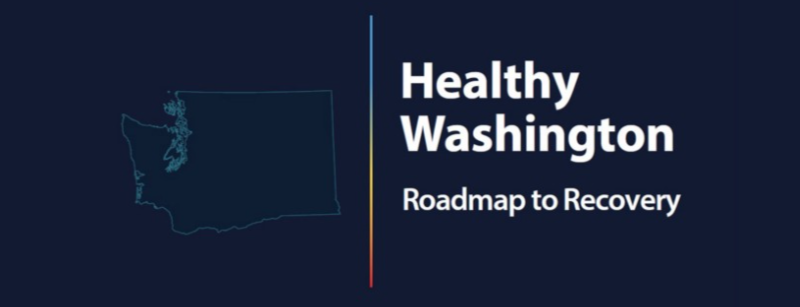||| FROM STATE DEPARTMENT OF HEALTH |||
OLYMPIA – The latest COVID-19 modeling and surveillance situation report from the Washington State Department of Health (DOH) continues to show promising signs in decreased disease activity. The report also highlights the need for additional vaccination and continued preventive efforts (like wearing masks if unvaccinated) as the state moves toward reopening and beyond.
Report findings include:
- Statewide case counts and hospital admissions continued to decline as of June 3, but were starting to flatten slightly. Most counties were also seeing flat or declining case counts at that time, and 36 of 39 counties had fewer than 200 new cases per 100,000 people over the previous two weeks.
- As of June 3, case rates continued declining in all age groups except people 70 and older, among whom rates remained flat. For people ages 20-69, rates are approaching the low levels last seen in March before the fourth wave began. Hospital admission rates are also declining in people ages 20-79 and flat after earlier increases in people age 80 and older.
- As of the end of May, statewide transmission levels remained relatively high. The best estimate of the reproductive number (which tells us how many new people each COVID-19 case will infect) on May 28 was 1.03. A reproductive number of one means the virus is continuing to spread at about the same pace. To keep case rates declining, the reproductive number needs to stay well below one for a substantial amount of time.
- While vaccination has helped to reduce transmission, increases in estimated population immunity have started to flatten as vaccination rates slow. On June 3, the best model-based estimate of overall population immunity was 47%. Estimated immunity from vaccination at that time was around 33.3%.
- Vaccination is clearly protecting people from severe COVID-19 illness, as demonstrated by the very different hospital admission trends we are seeing in unvaccinated populations. As of early June, estimated admission rates among unvaccinated people ages 45-64 continued to increase despite declining rates in the overall population that age. For people 65 and older, admission rates were flattening at a high level for unvaccinated people and were flat but much lower in the overall population that age. The estimated admission rate for unvaccinated people is 21 times higher than for vaccinated people in ages 45-64 and 15 times higher in unvaccinated people compared to vaccinated people in ages 65 and older.
- Variants of concern continue to pose additional risks for outbreaks and impacts to the health system, especially in places where vaccination rates are lower. While the genetic sequencing data we have for some cases and modeling estimates of the likely presence of variants statewide provide different exact percentages, both indicate the alpha (B.1.1.7) variant is by far the dominant strain and responsible for somewhere around half of cases. Both data sources suggest the next most common strains are the gamma (P.1) variant, likely around 20% of cases, followed by the delta (B.1.617.2) variant. The gamma and delta variants both appear to be at concerning levels and increasing. The best way to control the spread of variants is to increase vaccination.
“The evidence is clear: vaccination protects you and the people around you, including kids under 12 who can’t get vaccinated yet,” said Acting State Health Officer Scott Lindquist, MD, MPH. “Immunity levels in your community and social circles determine how likely you are to be exposed to the virus, and we expect to continue seeing outbreaks in communities with lower vaccination rates. As we get closer to reopening, you can help keep your community safe by getting your vaccine and talking to the people you know about getting theirs.”
DOH partners with the Institute for Disease Modeling, Fred Hutchinson Cancer Research Center, University of Washington and the Microsoft AI for Health program to develop these reports every other week. More COVID-19 data can be found on the DOH data dashboard.
**If you are reading theOrcasonian for free, thank your fellow islanders. If you would like to support theOrcasonian CLICK HERE to set your modestly-priced, voluntary subscription. Otherwise, no worries; we’re happy to share with you.**







